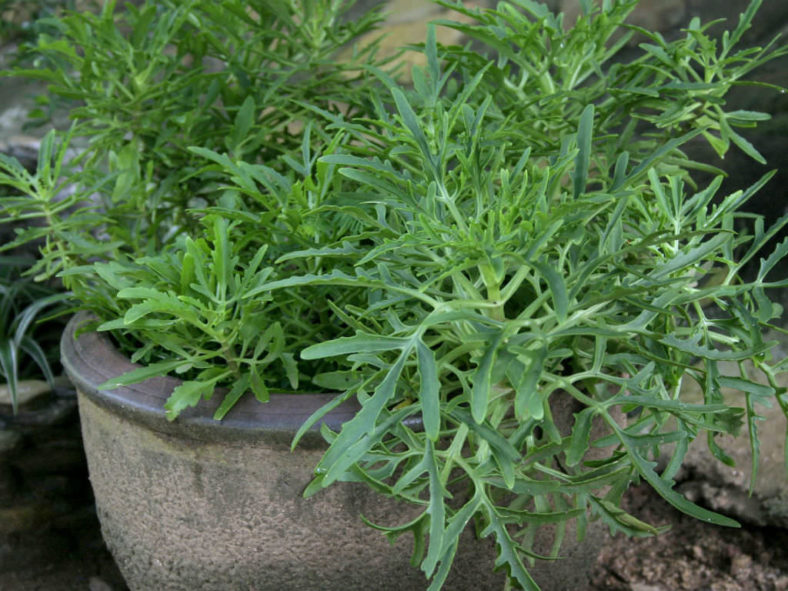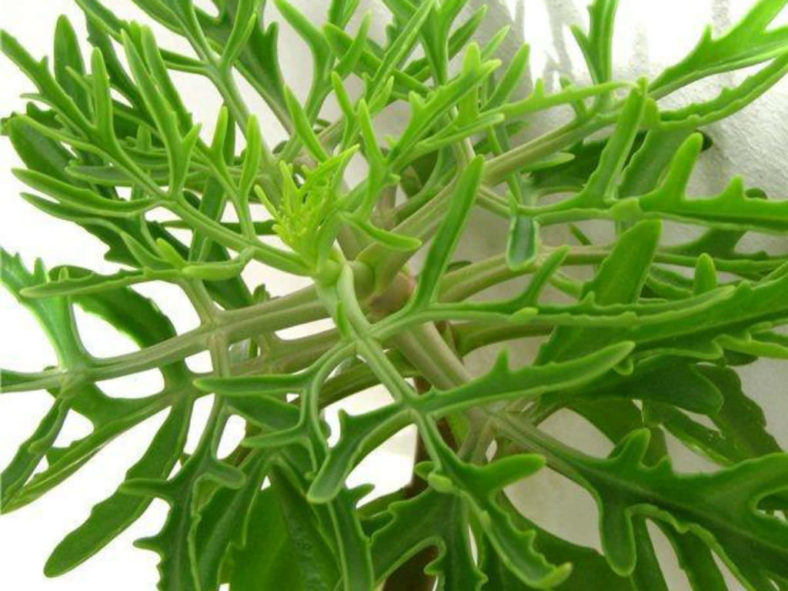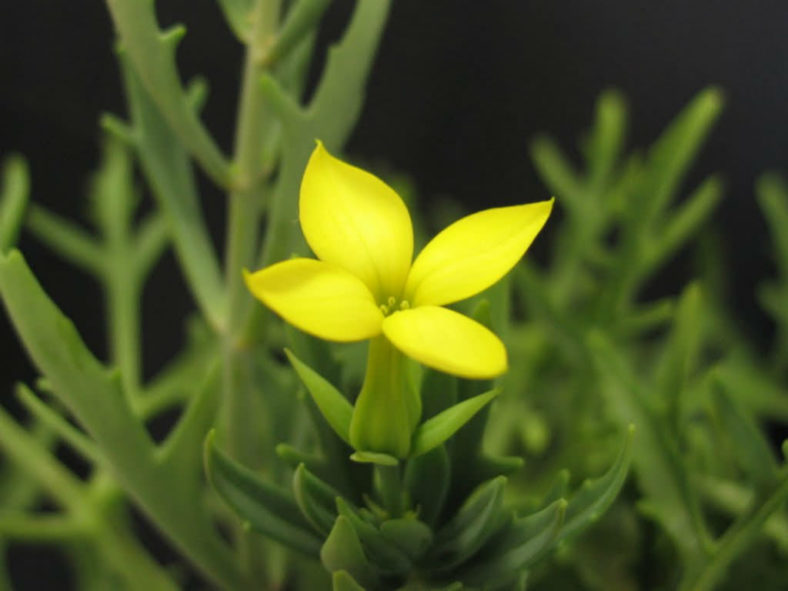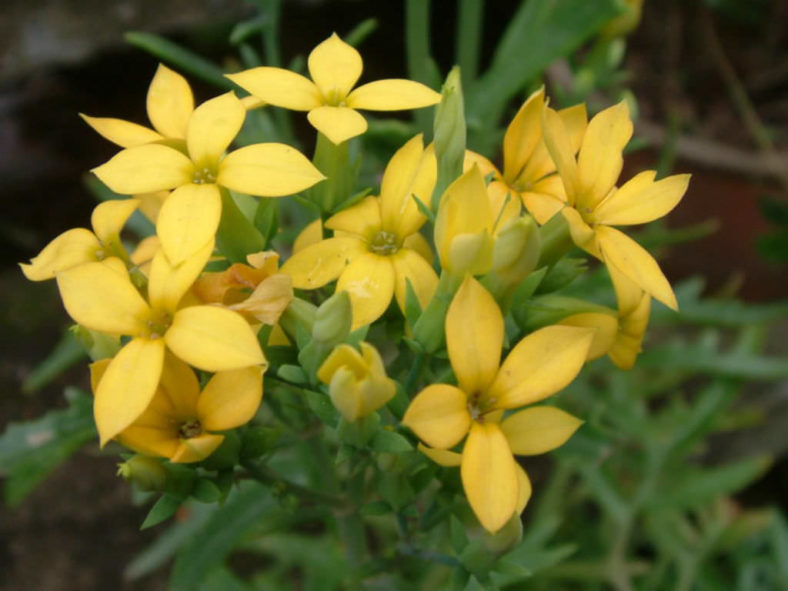Scientific Name
Kalanchoe laciniata (L.) DC.
Common Name(s)
Cathedral Bells, Christmas Tree Kalanchoe, Christmas Tree Plant, Fir Tree Kalanchoe, Lace Leaf Kalanchoe
Synonym(s)
Cotyledon laciniata, Vereia laciniata
Scientific Classification
Family: Crassulaceae
Subfamily: Sedoideae
Tribe: Kalanchoeae
Genus: Kalanchoe
Origin
This species is native to Morocco, eastern, southern, southwestern Africa, the Arabian Peninsula, and Southern India. It grows in open bushland, scrub, and margins of thickets at elevations from 1,480 to 6.650 feet (450 to 2,000 m).
Description
Kalanchoe laciniata is a succulent plant with a reddish, erect, usually simple stem and thick, fleshy green leaves that vary in shape. It can grow up to 5 feet (1.5 m) tall. The leaves are petiolate, usually compound or dissected, rarely undivided or 3-lobed. The leaflets are ovate, lanceolate, or linear, with regularly toothed or serrated margins. They can grow up to 5.6 inches (14 cm) long and 1.6 inches (4 cm) wide.
The fragrant flowers vary in color from yellow and yellow-green to orange. They appear in summer in dense flat-topped clusters, forming a panicle-like inflorescence that can reach a height of up to 2 feet (60 cm).

Hardiness
USDA hardiness zones 10a to 11b: from 30 °F (−1.1 °C) to 50 °F (+10 °C).
How to Grow and Care
Kalanchoe care is minimal, but be cautious about light levels. Intense sunlight can burn the tips of the leaves. Place pots in partial sun to light shade areas.
The flowering varieties are highly rewarding for their colorful and long-lasting flowers. They prefer bright, sunny locations, especially in the growing season. Water moderately from fall to winter when the growth is most active. Reduce watering during the hottest summer months when the plants are mostly dormant and winter when the growth slows significantly. Let the soil surface dry out between waterings. Watch the fleshy leaves for signs of water distress. An ordinary potting soil mix is fine. Feed bi-weekly during the growing season with a liquid fertilizer, or use slow-release pellets.
These small plants require repotting every few years. When repotting, take additional care in handling, as the leaves are somewhat brittle and can snap easily. Clay pots work exceptionally well for planting Kalanchoes. Ensure pots drain well and saucers empty easily.
Learn more at How to Grow and Care for Kalanchoe.
Links
- Back to genus Kalanchoe
- Succupedia: Browse succulents by Scientific Name, Common Name, Genus, Family, USDA Hardiness Zone, Origin, or cacti by Genus
Photo Gallery
Click on a photo to see a larger version.


